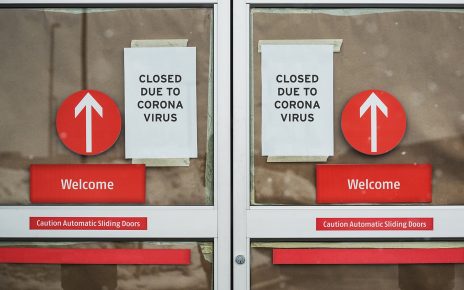The items below are highlights from the free newsletter, “Smart, useful, science stuff about COVID-19.” To receive newsletter issues daily in your inbox, sign-up here. Please consider a monthly contribution to support this newsletter.
The role that symptom-free (“asymptomatic”) people infected with the new coronavirus play in spreading it grew more clear with a study published 8/6/20 and covered the same day by Apoorva Mandavilli at The New York Times. The study, published in JAMA Internal Medicine, “offers more definitive proof [than past studies did] that people without symptoms carry just as much virus in their nose, throat, and lungs as those with symptoms, and for almost as long,” Mandavilli reports. Questions about asymptomatic transmission remain, however, because the researchers did not trace transmission by asymptomatic people, nor did they grow live virus from samples taken from infected asymptomatic people, “which might have more directly confirmed active infections,” the story states. And it’s notable that asymptomatic people have no need to cough or sneeze more than usual, so “they are less efficient at expelling the virus than those who are clearly unwell,” says a University of Hong Kong epidemiologist mentioned and quoted in the story. The researchers estimate that 30 percent of people infected with SARS-CoV-2 never develop symptoms, which is similar to previous estimates of this value, the story states. “This study underscores the importance of everyone wearing masks and maintaining physical distance, even if they feel perfectly fine,” Mandavilli tweeted about the story.
For Kaiser Health News, Liz Szabo has written a clear summary of where things stand with vaccine development efforts to protect us from SARS-CoV-2 (8/3/20). The story notes various concerns that you’ve probably seen elsewhere — 1) dwindling antibodies in COVID-19 survivors, 2) the relatively new and unproven approaches being used by some of the leading vaccine development efforts (ones by Moderna, by Pfizer with BioNTech, and by Oxford University with AstraZeneca), and 3) uncertainty as to whether vaccines will truly end the pandemic or just protect us from severe cases of COVID-19 (like the flu vaccine does with influenza). The story overall takes a positive view of those issues, quoting Dr. Anthony Fauci, director of the U.S. National Allergy and Infectious Diseases Institute. “He’s ‘cautiously optimistic’ that researchers will overcome such obstacles,” the story states. The story includes some of the clearest writing I’ve seen to explain the science driving the Moderna and the Oxford/AstraZeneca vaccine candidates. The story also nicely explains how memory T-cells contribute to immunity when antibodies are diminished in number. “The T-cells are like the conductors of a symphony,” a University of California, Los Angeles, infectious diseases researcher is quoted as saying. “These multiple, complementary arms of the immune system work together like a symphony to control infection.”
An opinion essay at STAT by Karen Mulligan and Karen Van Nuys, both at the University of Southern California Center for Health Policy and Economics (CHPE), lays out several reasons to prioritize the development of COVID-19 treatments in parallel with vaccines. Their bottom line, based on a model described in a 7/8/20 report, is that a preventive treatment something like Tamiflu but for this new virus could not only save lives and relieve the pressure of COVID-19 cases and surges on hospitals. It could also put a dent in the $7.9 trillion negative impact COVID-19 is projected to have on the U.S. economy over an 11-year horizon, per the U.S. Congressional Budget Office. Such a treatment also could backstop vaccines, which are “notoriously difficult to make and distribute,” Mulligan and Van Nuys write. Direct and indirect savings would be in the tens of billions of dollars, at least, the essay states. Such a treatment also could “increase people’s willingness to return to more normal levels of economic activity,” the authors write (8/5/20).
An interview by Scott Hershberger at Scientific American with Carl Bergstrom, a biologist at the University of Washington (UW), offers tips from a new book, “Calling Bullshit: The Art of Skepticism in a Data-Driven World,” co-authored by Bergstrom and Jevin West, a UW associate professor who studies science and the spread of misinformation. This topic remains highly relevant during the COVID-19 pandemic. Bergstrom’s advice in the interview includes relying on “trusted, traditional media sources rather than turning to Twitter or Facebook or WhatsApp, because when you do that, you get information that’s a little bit more recent, but the quality of that information is far, far lower.” And rather than dismissing an authority or a professional because their advice has changed over time, he recommends trusting those authorities, because “the ones who are changing their views and advice, based on evidence, are the ones who are doing science and the ones who are giving good recommendations.” He adds: “The people you can’t trust are the ones who have not changed their views and advice, despite having enormously more evidence” (emphasis in original; 8/3/20).
Ventilation has gone unmentioned or is under-discussed in public-health messages about reducing the risk of SARS-CoV-2 infection, which of course can cause severe respiratory illness, writes University of North Carolina sociologist Zeynep Tufekci for The Atlantic (7/30/20). The piece gets especially interesting in the last 15 paragraphs, starting with “All this has many practical consequences.” Given the findings on short-range small-droplet transmission in the air (or “aerosol transmission”) to date, we should “focus as much on ventilation as we do on distancing, masks, and hand-washing,” Tufekci writes. Masks should be mandatory indoors “regardless of distancing, but not necessarily outdoors,” she writes. At televised indoor events, “the person who needs to be masked the most is the speaker, not the listeners,” she writes. And “when a masked person is speaking, the least safe location might be beside them or behind them, where the aerosols can escape from the mask, though ordinary, under a [large] droplet regime, we would consider the risk to only be in front of them,” she writes. Implications for reopening schools include teaching outdoors when possible, opening windows, installing portable, inexpensive HEPA filters, and upgrading filters in HVAC systems to “MERV 13 or higher.”
It’s well-known by now that COVID-19 can cause weeks and months of long-term complications. Those conditions can include “fatigue, a racing heartbeat, shortness of breath, achy joints, foggy thinking, a persistent sense of smell, and damage to the heart, lungs, kidneys, and brain,” reports Jennifer Couzin-Frankel at Science (7/31/20). A young neuroscientist at University College London who herself is suffering from long-term COVID-19 effects collaborated with Body Politic, a group of COVID-19 survivors, to catalog the symptoms among more than 600 people with enduring symptoms — “she logged 62 different symptoms,” Couzin-Frankel writes. In some cases, people’s experience is in a gray zone — neither recovered from COVID-19 nor sick enough for hospitalization in an intensive care unit. The prevalence of these lingering symptoms among survivors is unclear, Couzin-Frankel reports, but some long-term studies are under way.
This 6/18/20 “minute physics” video provides an accessible explanation of how N95 masks work—like more like a spider’s web, and not like a sieve, as the video states. The video explains how these masks filter particles smaller than the holes in the mask material.




